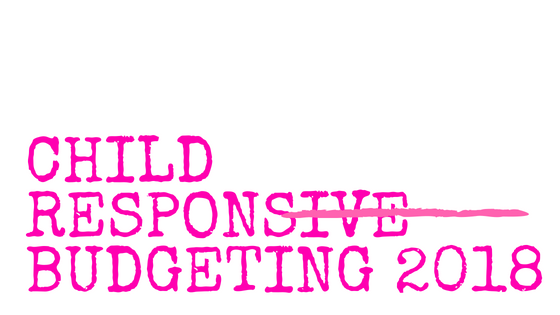Child Responsive Budgeting 2018
Today, I was fortunate to be part of a forum organized by World Vision. The organization shared their findings on a research they conducted on how twenty three (23) counties have budgeted for children. This is what we call ‘child sensitive budgeting.’
Background
World Vision is “a Christian relief, development and advocacy organization, dedicated to working with children, families and communities to overcome poverty and injustice.” That is a direct quote from their documents.
World Vision works in 35 counties in Kenya with a total of 50 programs and they reached out to 1,849,317 children in 2017 alone. A total of 862 staff worked for World Vision and 138,499 children benefited from their sponsorship program.
World Vision has prioritized child protection, Disaster Management, Water and Sanitation, Education, Livelihood & Resilience as well as Health issues. These are the thematic areas under which the organization works.
World Vision Expenditure
In 2017, World Vision spent USD$70,251,288 on its various programs which are life changing in nature. This ranges from providing 1,446 wheel chairs to children with mobility limitations; sensitized Kenyans on ending violence against children; trained 6,086 community members on household financial management among other projects.
Disaster Management
World Vision reports that, they responded to 15 counties affected by hunger out of the possible 23. That way they further report that they reached out to 244,973 children beneficiaries in Kakuma as well as Dadaab Refugee camps.
Main Findings
a) Most counties around Kenya have done very well in constructing infrastructure for ECDEs but little has been done in ensuring that those classrooms have qualified and well remunerated teachers.
b) There is a general disregard of children in policy formulation processes. There is no county with direct or indirect opportunities for children to participate in policy making processes.
c) There are assumptions that children’s interests are catered for by their parents and the society in general.
d) Civil Society Organizations can play a role in bridging the gap but also in advocating for inclusion of children in decision-making processes both at the county and national level of government.
e) Most public participation forums in most counties are conducted when children are at school and hence they never get a chance to have their say.
f) County Budget and Economic Forum (CBEF) is a body which was created by Article 137 of the Public Finance Management Act 2012. This body can play a central role in including children in for instance the budgeting process at the counties in:
- Preparation of county plans, County Fiscal Strategy Papers; and County Budget Review and Outlook Papers.
- Matters relating to budgeting, the economy and financial management at the county level.
How can children participate?
There are many ways in which children can be part of the public policy discourse. Timothy Kiprono, the Executive Director for Eldoret-based Center for Innovations in Open Governance believes that children can be involved in public participation through Children’s Assemblies.
On the other hand, I believe that our children can be involved through organizing debates with the schools in each county to seek the input of our school children. But before that happens, our governments must put a lot of efforts to ensure the policy documents are availed in a language that children can understand. Secondly, the counties must conduct civic education on the essentials or basics of policy making.
Remember, there is a saying which goes, “nothing for us without us.” This is so true even for children.
Thank you for reading. Now go right a head and ask your local and national leaders to tell you what they are doing to ensure children are involved in policy formulation processes. While you are at it, take some action today and make sure your children have a say in the public debates to chart their future.
Read More:


